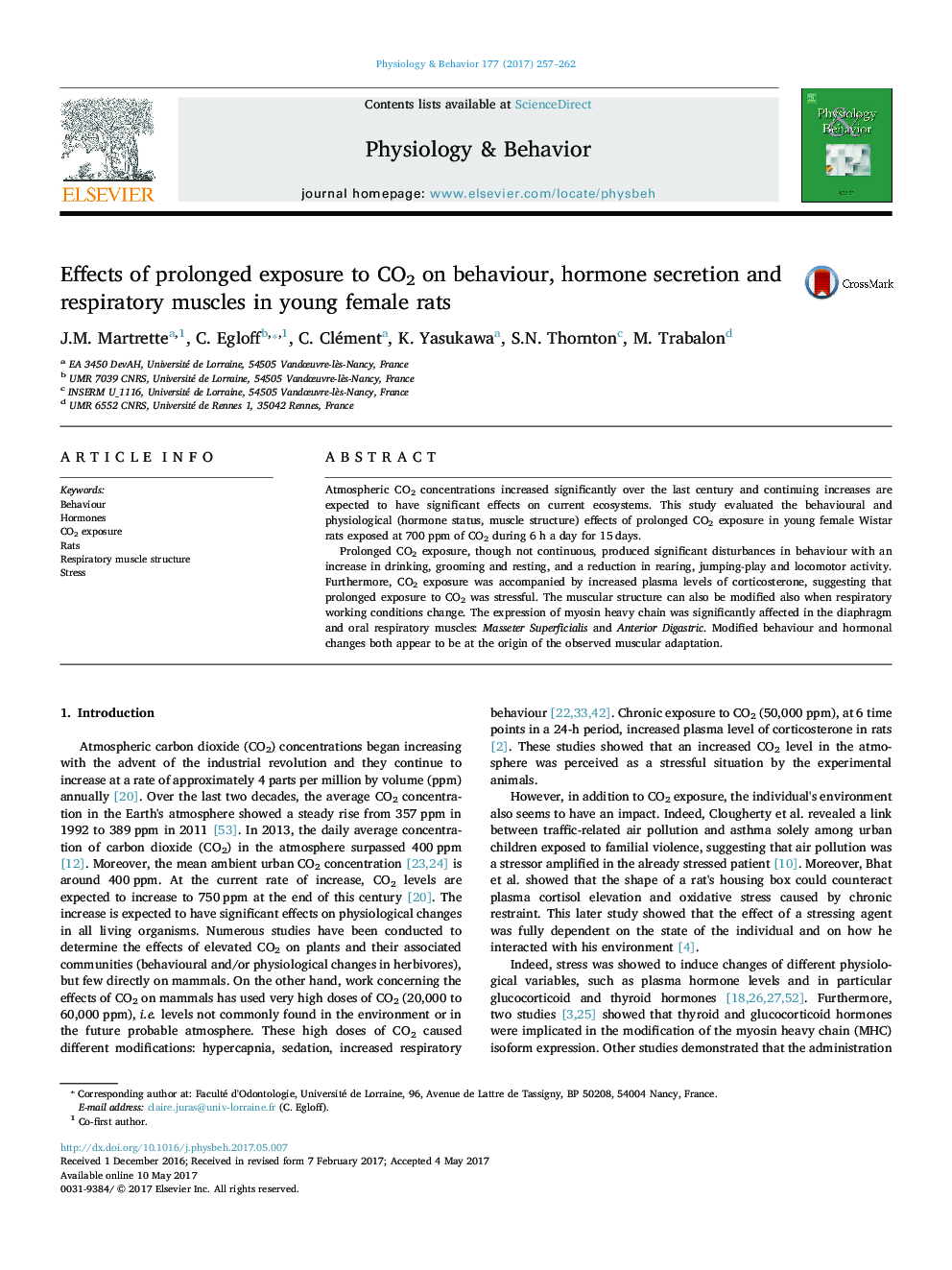| Article ID | Journal | Published Year | Pages | File Type |
|---|---|---|---|---|
| 5593750 | Physiology & Behavior | 2017 | 6 Pages |
Abstract
Prolonged CO2 exposure, though not continuous, produced significant disturbances in behaviour with an increase in drinking, grooming and resting, and a reduction in rearing, jumping-play and locomotor activity. Furthermore, CO2 exposure was accompanied by increased plasma levels of corticosterone, suggesting that prolonged exposure to CO2 was stressful. The muscular structure can also be modified also when respiratory working conditions change. The expression of myosin heavy chain was significantly affected in the diaphragm and oral respiratory muscles: Masseter Superficialis and Anterior Digastric. Modified behaviour and hormonal changes both appear to be at the origin of the observed muscular adaptation.
Related Topics
Life Sciences
Biochemistry, Genetics and Molecular Biology
Physiology
Authors
J.M. Martrette, C. Egloff, C. Clément, K. Yasukawa, S.N. Thornton, M. Trabalon,
